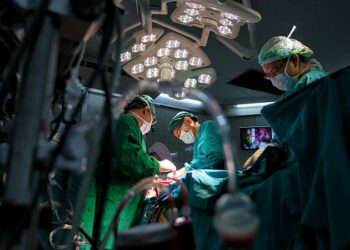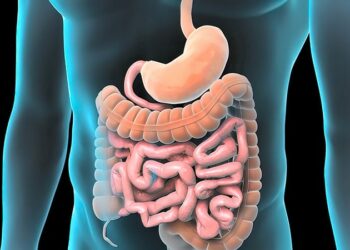RIO DE JANEIRO — A quadruplet induction regimen of isatuximab, carfilzomib, lenalidomide, and dexamethasone (Isa-KRd) in the treatment of newly diagnosed multiple myeloma (MM) shows a notably high response, with a favorable safety profile, according to the first findings of the ongoing, novel MIDAS trial.
“We found that this induction induced exceptionally high response and minimal residual disease (MRD) negativity rates,” said first author Aurore Perrot, MD, PhD, an associate professor of hematology at the University of Toulouse, Toulouse, France, in presenting the findings at the International Myeloma Society (IMS) 2024 21st Annual Meeting & Exposition in late September.
“These rates are the highest reported to date regarding MRD negativity,” she said.
The results from a first interim analysis offer encouraging groundwork in the trial that is investigating the tailoring of subsequent therapeutic choices in patients with newly diagnosed MM based on MRD status after six cycles of induction therapy.
In the standard treatment regimen of induction therapy followed by up-front autologous stem cell transplant (ASCT), the use of ever-improving quadruplet regimens is bolstering prognoses, while the role of up-front ASCT continues to be debated, Perrot explained. She noted that no prospective trials have compared up-front transplant vs no transplant following a quadruplet regimen.
In reporting on the initial findings from the induction phase of the phase 3 IFM 2020-02 MIDAS study, Perrot described results among 791 transplant-eligible patients with newly diagnosed MM and a median age of 59 who were enrolled at 72 centers between December 2021 and July 2023.
The patients were treated with six cycles of 28 days of the Isa-KRd regimen, consisting of isatuximab 10 mg/kg (weekly for 4 weeks then biweekly), carfilzomib 20 mg/m2 on day 1 cycle 1, then 56 mg/m2 (days 1, 8, and 15), lenalidomide 25 mg/d (from day 1 to day 21), and dexamethasone at 40 mg/wk.
Overall, MM was classified as International Staging System (ISS) III in 120 patients (15%) and revised-ISS III in 76 (10%) patients.
Of 757 patients undergoing cytogenetics, 8% were considered high risk on the basis of a linear predictor score > 1, while the t(11;14) translocation, a chromosomal abnormality, was present in 26% of patients.
Extramedullary disease was present in five patients, while 53 (7%) had circulating plasma cells.
All 791 patients initiated Isa-KRd induction, and most (766, 97%) had at least one peripheral stem cell mobilization course, with 761 having at least one apheresis. The median number of CD34+ cells collected was 7.106/kg.
The peripheral stem cells collected allowed for potential tandem transplants in 719 patients.
In total, 757 patients completed six cycles of Isa-KRd, with an overall response rate of 95%.
In the intent-to-treat (ITT) population, a very good partial response or better was achieved in 92% of patients following induction, with a rate of 99% in the per-protocol [PP] population.
Of 751 patients in the post-induction ITT population, the MRD negativity rates were 63% at the threshold of 10−5 and 47% at the threshold of 10−6, with corresponding rates of 66% and 50%, respectively, in the PP population.
The rates of near-complete response and complete response were 64% and 66% in the ITT population, and 69% and 71% in the PP population.
Of note, no significant differences were observed in prognostic subgroups, with a trend for a higher MRD negative rate among poorer prognostic groups, Perrot said.
However, notable variability was observed in terms of MRD negativity at 10−5 after induction among some cytogenic groups, with an MRD negativity rate as high as 81% among patients with the t(4;14) translocation vs 62% among those without the abnormality (P = .002), while it was only 40% among patients with the t(11;14) translocation vs 64% without (P
“This is the first time we have observed this correlation between the MRD negativity and these cytogenetic subgroups,” Perrot noted.
“For the moment, we are not saying that patients with the t(11;14) translocation have a poor prognosis,” she added. “But just that the early assessment of MRD shows the lower negativity rates.”
Safety
Seven patients experienced disease progression and five died during induction, with one dying from disease progression, two deaths related to cardiac adverse events (AEs), and two related to other AEs.
In terms of safety, the most common grades 3-4 AEs were neutropenia (25%), thrombocytopenia (5%), and infections (7%).
Peripheral neuropathy was reported among 13% of patients at any grade, and less than 1% grades 3-4.
“Our findings confirm that six cycles of Isa-KRd induce exceptionally high response and MRD negativity rates, not only at a sensitivity of 10−5 but also at 10−6,” Perrot said.
She noted that, in comparison, the MRD negativity rate at 10−5 in the related CASSIOPEIA, GRIFFIN, and IsKia trials were 35%, 22%, and 45%, respectively.
“A longer follow-up is needed to better interpret the significance of achieving MRD negativity in patients with different cytogenetic abnormalities,” Perrot added.
“Importantly, the Isa-KRd induction ensures successful stem cell collection, with no new safety signals,” she said.
The Isa-KRd regimen is not yet approved, hence only used in clinical trials, but Perrot told this publication the current evidence should help change that.
“The IsKia trial is comparing KRd and Isa-KRd, and Sanofi should try to approve the combo,” she said. “We hope the Midas data will support this approval.”
Questions Aplenty Moving Ahead
While the results are just the first from the ongoing trial, interest in the study and its design is high, Joseph Mikhael, MD, chief medical officer of the International Myeloma Foundation, told this publication.
“To have a large trial algorithm that is based on response and in particular MRD is novel and reflects the power of MRD in myeloma,” said Mikhael, a professor of applied cancer research and drug discovery at the Translational Genomics Research Institute, City of Hope Cancer Center, in Phoenix.
“Although the results are preliminary, these kinds of trials can inform our approach to MRD testing and may result in more personalized and effective treatments for patients,” he said. “This may include the potential to de-escalate or even stop therapies that have historically been given for longer or provide more intense therapies for patients with inadequate response.”
“We know the biology of myeloma is ‘one-size-fits-all’, so the design of our trials should reflect that heterogeneity.”
Further commenting on the research, the meeting discussant Sagar Lonial, MD, professor and chair of the Department of Hematology and Medical Oncology and the Anne and Bernard Gray Professor in Cancer at the Winship Cancer Institute of Emory University, Emory University School of Medicine, in Atlanta, offered cautious optimism.
Referencing the tale of Midas in Greek mythology as having a “be careful what you wish for” lesson, Lonial pondered that, likewise, a question that may be considered regarding MRD is “whether this is in fact a gift — or could this be a curse that’s going to get us into trouble at some point down the road. I don’t know the answer.”
Some cautionary lessons include prior research indicating that patients with high-risk disease may achieve a complete remission early — but they lose remission earlier down the road, he noted.
Other considerations as the research moves forward: “Recognizing that MRD may in fact be more important than genetics — which is a premise of the current trial,” Lonial pondered. “Does MRD override genetics, or do they travel together?”
The study is ongoing, with future results expected in terms of ASCT vs no ASCT for patients with high and low risk, as well as single vs tandem ASCT.
The trial received financial support from Amgen, Bristol Myers Squibb, and Sanofi. Perrot reported ties with Amgen, Bristol Myers Squibb, and Sanofi. Mikhael disclosed ties with Amgen, Bristol Myers Squibb, and Sanofi. Lonial reported relationships with Celgene, Bristol Myers Squibb, Amgen, and Sanofi.
Source link : https://www.medscape.com/viewarticle/myeloma-isa-krd-induction-shows-high-mrd-responses-2024a1000ifr?src=rss
Author :
Publish date : 2024-10-09 08:32:54
Copyright for syndicated content belongs to the linked Source.














